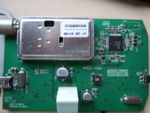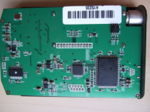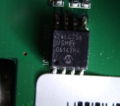Anysee E30C Plus: Difference between revisions
m (minor fixes) |
mNo edit summary |
||
| Line 10: | Line 10: | ||
Based upon the analysis of USBsnoop logs, it appears that the control API used for the FX2 chip is the same as that employed by a Conexant reference design, and which is known to be utilised by a few other devices. The control API should be documented on [http://isely.net/ isely.net] and as well as inside [http://linuxtv.org/hg/v4l-dvb/file/tip/linux/drivers/media/dvb/dvb-usb/cxusb.h cxusb.h]. |
Based upon the analysis of USBsnoop logs, it appears that the control API used for the FX2 chip is the same as that employed by a Conexant reference design, and which is known to be utilised by a few other devices. The control API should be documented on [http://isely.net/ isely.net] and as well as inside [http://linuxtv.org/hg/v4l-dvb/file/tip/linux/drivers/media/dvb/dvb-usb/cxusb.h cxusb.h]. |
||
In the bundled Windows driver/software, there are two firmware files, anyseeAUDB.ROM and anyseeAUDC.ROM. These may or may not have anything to do with this particular device (they may instead be related to analog support provided by a Conexant cx2584x IC |
In the bundled Windows driver/software, there are two firmware files, anyseeAUDB.ROM and anyseeAUDC.ROM. These may or may not have anything to do with this particular device (they may instead be related to analog support provided by a Conexant cx2584x IC found in the [[Anysee K50|K50]]). |
||
==Components Used== |
==Components Used== |
||
Revision as of 13:30, 18 September 2007
A DVB-C USB 2.0 device from Anysee.
It is currently unsupported.
While the Anysee website states support for "analog tv and use external a/v input", this is absolutely incorrect (none of Anysee's "E series" devices support analog functionality, rather only their K50 can claim such a feature). This unfortunate case of misinformation is likely the result of a simple "copy & paste" type mistake by whomever created the webpage.
One will find that the device actually contains only an USB connector, antenna input, and a slot for a smart card (Anysee devices bearing "Plus" in their product name indicate the presence of a smart card interface). Additionally, a remote control is bundled in the package.
Based upon the analysis of USBsnoop logs, it appears that the control API used for the FX2 chip is the same as that employed by a Conexant reference design, and which is known to be utilised by a few other devices. The control API should be documented on isely.net and as well as inside cxusb.h.
In the bundled Windows driver/software, there are two firmware files, anyseeAUDB.ROM and anyseeAUDC.ROM. These may or may not have anything to do with this particular device (they may instead be related to analog support provided by a Conexant cx2584x IC found in the K50).
Components Used
- Samsung DTOS403IH102A (tuner module)
- ? (tuner IC)
- Microchip 24LC256 (serial EEPROM) ... situated on back side of the PCB directly beneath where the tuner IC would be
- NXP/Philips TDA10023HT (digital demodulator)
- Cross CST56I01 (smart card controller)
- Cypress CY7C68013A (i.e. FX2LP) (USB bridge)
- PIC16LF72 (remote control)
The seperate board housing the Conditional Access slot, and which is attached to the main PCB by way of a parallel ribbon cable, can be seen in the following pictures. The other additional photos highlight some of the ICs situated on the main PCB whose label is hard to read in those shots at the top of the page.






